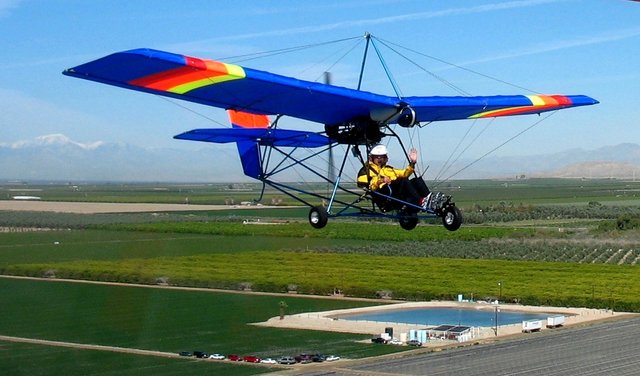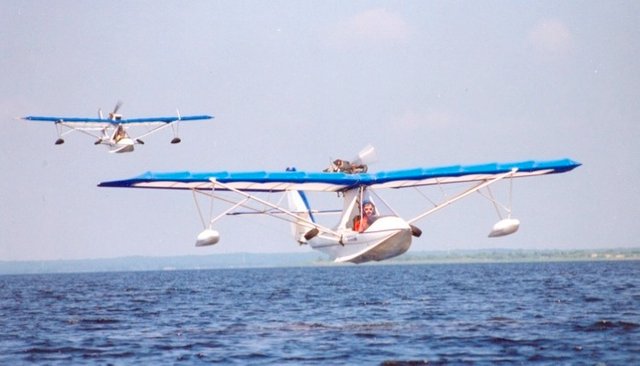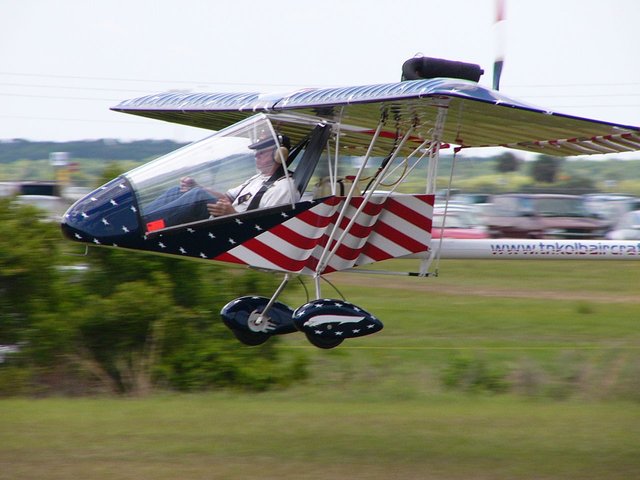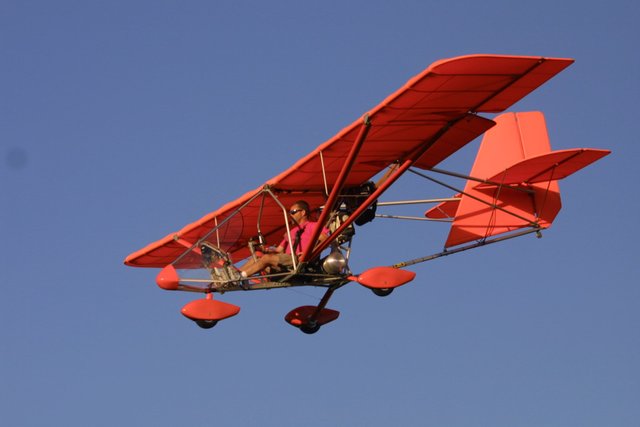Ultralights: Learn to Fly on the Cheap!
Have you ever considered how awesome it would be if you could fly in your own personal aircraft? Learning to fly is not as hard, time consuming or expensive as you may think; and for the cost of that nice gaming computer you are using as a flight simulator, you could purchase your own personal ultralight aircraft and fly for real! For the purpose of this article, I will be discussing powered flight as opposed to gliders or balloons.
Discovery Flights
Just about every county or town has a small municipal airport. Most of these small airports have a private flight instructor or a flight school which operates on the field. A fun and inexpensive way to see if flying a light aircraft is for you is to book a ‘discovery flight’ with an instructor. A discovery flight is a one on one introductory flight in a light aircraft. You will be sitting in the pilot seat and actually fly the aircraft with your instructor’s assistance. A discovery flight usually lasts around 30 minutes and typically costs $50-$100 USD. You will find out pretty quickly if you love it or hate it!
Part 103 Ultralights
In my opinion, the most fun and inexpensive way to get started in powered flight is a fixed wing ultralight aircraft or a powered parachute. Here in the U.S., beginning in 1982, the Federal Aviation Administration (FAA) introduced 14 CFR Part 103, which formally established rules for what is truly recreational flying. What I’m about to tell you is going to take many of you by surprise. Part 103 allows ANYONE, regardless of age, experience or aeronautical knowledge to be pilot in command (fly) an ultralight aircraft and you DO NOT need a pilot’s license or a medical certificate to be pilot in command of an ultralight aircraft under Part 103 as long as your aircraft meets the requirements of the regulation. No test, no check ride, no registration required! In a nut shell, as long as your aircraft weighs under 254 pounds (not including emergency parachute or floats), holds no more than 5 U.S. gallons of fuel, has a maximum air speed not to exceed 55 knots and has a powered off stall speed (landing speed) no greater than 24 knots, it qualifies as a Part 103 ultralight. Downsides (if you want to call it that) is that Part 103 ultralight aircraft are limited to a single occupant, can only be flown during daylight hours and must remain clear of big airplane airspace. That being said, even though I hold a FAA private pilot license and can fly bigger aircraft, I find that I fly alone, during the day, outside of of big airplane airspace 90% of the time anyway!
Training
Although not required by Part 103, the most important thing to understand before attempting to fly an ultralight (or any aircraft) is that, no matter what the law says, you should SEEK PROPER TRAINING WITH AN INSTRUCTOR! I cannot stress this enough. To drive this point home, you could end up as a red spot on the ground in short order without proper training! I’m not trying to scare you; I just want you be as safe as possible while enjoying the thrill of flying. There are ultralight instructors and ultralight flying clubs across the country and around the world who can teach you the ins and outs of flying an ultralight aircraft safely. A great first step is to check online to see if there is a local ultralight flying club near you. Another great resource to start with is the Experimental Aircraft Association (EAA) web site or check with your local municipal airport. You can check out EAA with the link provided at the end of this article.

Powered parachutes are a relaxing and inexpensive way to fly
Time and Money
Have I sparked your interest yet? The obvious next questions are how long does it take and how much does it cost? While I cannot give you an exact number, as every individual’s learning curve is different, I can shine some light on this. You can hire an instructor, including rental of the aircraft and fuel, somewhere in the neighborhood of $100 USD per hour of flight time. If you have never flown an aircraft, expect around 10-15 hours of dual instruction in an ultralight before you will feel confident enough in your piloting skills to fly solo. Whoa! $1500 USD is allot of money! Yes, but think about what I said above. You can easily spend more than that on a nice gaming computer and pretend to fly or you can be the envy of all your friends while you fly over their house for real! Remember, you do not have to take a test or have a license to fly a Part 103 ultralight. You can easily be flying on your own after a couple weekends of instruction.

Quicksilver MX Sprint Ultralight
How much does an ultralight aircraft cost?
In the U.S., aside from some the most lenient rules in the world, ultralight flyers enjoy a low price tag for their flying machines compared to the rest of the aviation community. A Part 103 ultralight in good flying condition can be purchased on the pre-owned market for as little as $3000 USD. Again, you could be flying your very own ultralight aircraft for less than a week long Disney vacation costs! Of course, like anything, you can spend allot more on a newer model with all the bells and whistles if you have the means.
Build Your Own Ultralight!
Another neat thing about ultralights is you can buy one brand new as a prefabricated kit, and, if you are mechanically inclined, build one yourself in your garage or backyard! As a matter of fact, every ultralight pictured in this article can be purchased as a bolt together kit. Part 103 allows you to do this with no training or registration required. There are many reputable companies that sell proven, safe and reliable ultralight kits. Most amateur built from kit ultralights have been flying safely for decades. Speaking of safety, you can even add a full airframe emergency parachute or water floats to your ultralight with no penalty against the 254 pound weight limit. How fun would that be!

Aventura amphibious ultralight seaplane. Fun! Fun!
For me, the sense of freedom and self reliance you have once you leave the world below you is amazing. In fact, there is nothing like it. I hope you enjoyed this article and I look forward to writing more like it in the near future. Feel free to leave comments or questions below and I will answer best I can. Also, please feel free to resteem this post and don’t forget to follow me so you receive more interesting and originally written articles! Thank you for your support!
Captain Chris


Nice, I never flown lighter then 1400lbs, but it seems to be another feel. Nice post!
Thanks! And thanks for reading my stuff! :-)
Wow it looks great
It is! Go try it!